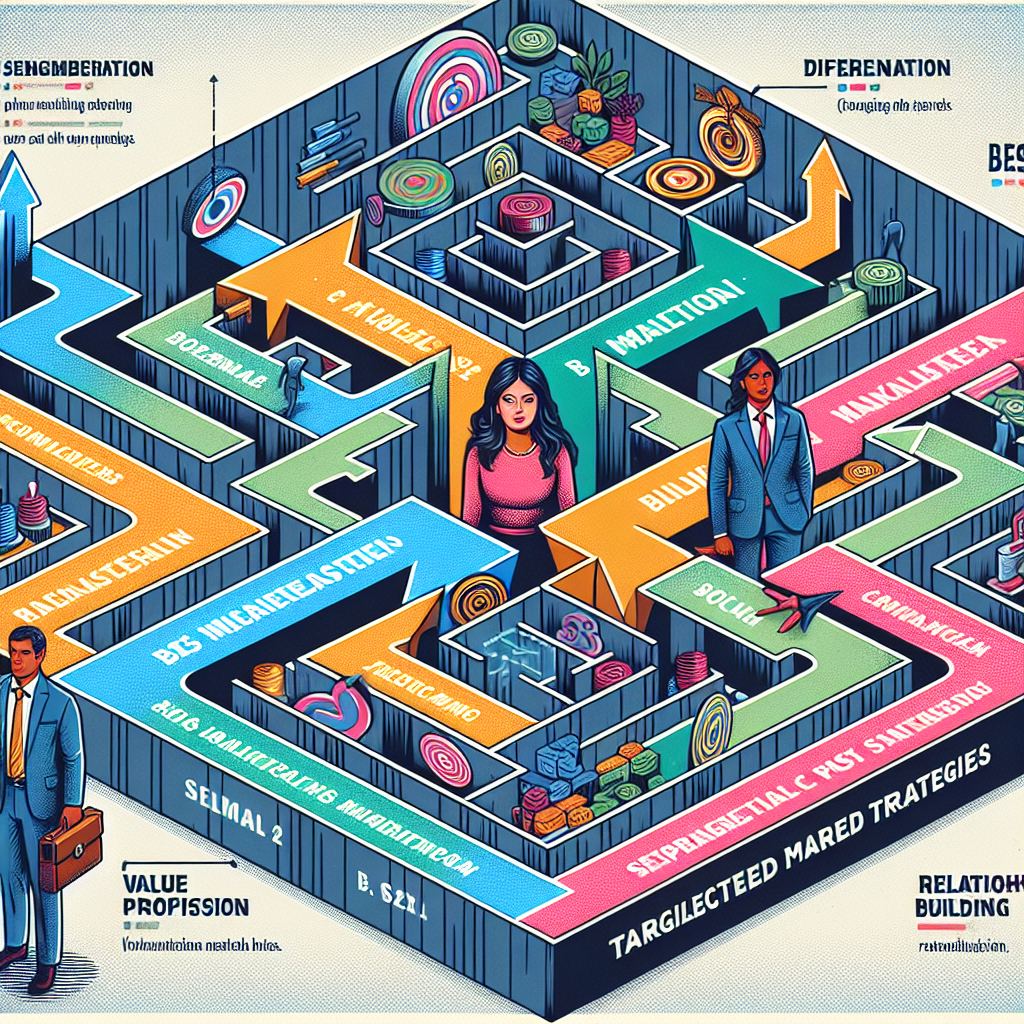Learn to Navigate Complex B2B Markets with Targeted Strategies
- Strategies for Understanding B2B Market Dynamics
- Identifying Your Target Audience Effectively
- Creating Tailored Marketing Strategies
- Measuring Success in B2B Marketing
Strategies for Understanding B2B Market Dynamics
Exploring Market Research Techniques
Getting a grip on B2B market dynamics is like piecing together a puzzle. You need to understand the pieces before you can see the whole picture. I’ve found that diving into comprehensive market research is super helpful. For starters, I always look for data reports that outline trends and shifts in the industry. This could be anything from analytics on purchase patterns to emerging technologies. Everything counts!
Another good move is to engage in competitor analysis. By keeping tabs on what your competitors are doing, you can gain insights into what strategies are working for them. I sometimes create a SWOT analysis to map out their strengths, weaknesses, opportunities, and threats, which really helps contextualize where I stand in the market.
Lastly, don’t forget to utilize qualitative research methods. You can conduct interviews or surveys with existing clients to dig deeper into their needs and perceptions of the market. I’ve made amazing discoveries from listening to direct feedback from customers, allowing for tailored approaches that resonate more effectively.
Identifying Your Target Audience Effectively
Utilizing Customer Personas
Understanding your audience is everything! When I set out to identify my target audience, I develop detailed customer personas. These personas each represent a segment of my market, capturing demographics, pain points, and buying behaviours. I often brainstorm these personas during my marketing meetings, finding a group dynamic can unearth insights I might miss alone.
Once I’ve identified these personas, I conduct focused outreach to see what messaging resonates with them. For instance, if one persona is a tech-savvy buyer, I’ll provide them with data-driven insights, whereas a more traditional buyer might appreciate anecdotal success stories. It’s all about tailored communication!
Don’t forget to regularly update your understanding of your audience. The B2B market is constantly evolving, and so are the companies and individuals within it. What resonated last year might not hold weight today, so keeping in touch is key.
Creating Tailored Marketing Strategies
Adapting Your Content to Buyer Stages
When I create marketing strategies, I make sure they align with the buyer’s journey. Customers go through different stages from awareness to decision-making. At each level, they have different needs. I love to create content that speaks to these stages, whether it’s informative blogs, detailed whitepapers, or engaging webinars.
For example, at the awareness stage, I focus on educating potential customers about problems they might not even know they have. By offering insightful content, I aim to build trust and establish authority in my niche, which pays dividends later on.
Moreover, I ensure to incorporate various channels—social media, email newsletters, and even events—to diversify my marketing reach. Multichannel marketing not only broadens your audience but also reinforces your message as customers cross paths with your brand in multiple ways.
Measuring Success in B2B Marketing
Defining KPIs That Matter
No campaign is successful without proper measurement! In my experience, defining key performance indicators (KPIs) is essential. It’s not just about tracking sales but understanding the entire funnel. I look at metrics like lead generation rates, conversion ratios, and even engagement on social media to grasp the full picture.
Using analytics tools can help tremendously in this area. I often rely on platforms that consolidate data so I can visualize trends over time. This helps me gauge what’s working and what needs tweaking without getting lost in the numbers.
Lastly, I make it a point to regularly review past campaigns. I ask myself what worked and what didn’t, adjusting my strategy accordingly. It sounds simple, but learning from both success and failure is at the core of developing effective marketing strategies!
FAQs
What are some common strategies for understanding B2B market dynamics?
Some common strategies include conducting comprehensive market research, engaging in competitor analysis, and utilizing qualitative research methods like customer interviews and surveys.
How can I effectively identify my target audience in B2B marketing?
Developing detailed customer personas is a great way to identify your target audience. This includes defining demographics, pain points, and buyer behaviours, as well as continuously updating their profiles based on market changes.
What should be included in a tailored marketing strategy?
A successful marketing strategy should adapt to the buyer’s journey, providing valuable content at each stage. Utilize different channels like social media, emails, and events to reach your audience effectively!
How do I measure the success of my B2B marketing efforts?
Defining meaningful KPIs is crucial for measurement. Look at lead generation, conversion rates, and engagement metrics over time using analytics tools to understand your campaign’s performance.
Get it now, your new content producer, that makes your journey so much easier.
This is a wonderfull resource it makes all the difference to your product creation and sales, even giving you a market place to list and sell your product.

